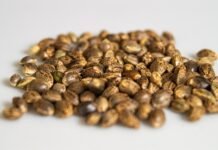Although acupuncture and Traditional Chinese Medicine have become much more mainstream over the past couple of decades, many people are still skeptical about this ancient treatment. Some people think the needles will be painful, and others think the whole concept is downright crazy! We’re here to clear up all of your misconceptions about this safe and effective alternative therapy.
Here are seven things you didn’t know about acupuncture, and why you should consider giving it a try!
-
Acupuncture Needles Are Tiny
If the traumatic memory of your childhood immunizations is stopping you from giving acupuncture a try, we’ve got good news for you! Acupuncture needles are tiny… almost as fine as a hair. In fact, the average size of an acupuncture needle is about 20 times smaller than the average needle used for injections.
Most patients don’t experience any pain during an acupuncture treatment, but there can be a slight pinch when the needle is inserted in certain areas. If you’re very sensitive, let your practitioner know. She may be able to use and even tinier needle, and in many cases, the needle doesn’t have to be inserted deeply to do its job.
-
Needles Aren’t Always Required
In order to become a licensed acupuncturist, practitioners are required to attend several years of training. Many of them have earned a doctorate in East Asian or Oriental medicine, which means they are qualified to perform a lot more than just acupuncture.
For example, practitioners at Brooklyn’s best acupuncture clinic offer a variety of therapies based on the patient’s individual needs. Cupping is a gentle treatment that is used to pull toxins toward the skin’s surface, where the body is better able to eliminate them. Moxibustion uses heat to stimulate the acupuncture points, and it’s extremely effective for turning breech babies. Neither treatment requires the use of needles.
In addition, many acupuncture clinics also offer acupressure, bodywork, and massage, as well as Chinese herbal medicine. Acupuncture is only one modality of treatment that falls under the definition of Traditional Chinese Medicine (TCM). If you’re dead set against needles, there are still a variety of natural and effective options available to you at your local acupuncture clinic.
-
There Are Many Different Styles of Acupuncture
The most ancient and traditional style of acupuncture was developed in China at least 3,000 years ago. However, other Eastern countries like Vietnam, Korea, and Japan have developed their own styles over the centuries. As with most traditional practices, acupuncture knowledge has also been passed down through families, with each family having their own style.
The acupuncturist you choose will likely have his or her own unique style. While traditional acupuncture is still very popular and extremely effective, newer styles of acupuncture are beginning to focus more on ear and scalp treatments for neurological disorders and anxiety. There’s also a popular style called Tung style that some swear is the best for pain relief. And, many believe Japanese style acupuncture is the gentlest.
The point is, each practitioner’s technique is different. If you’ve been to an acupuncturist and didn’t enjoy the experience or find it effective, it’s worth trying someone else. In many cases, seeing a different acupuncturist will bring entirely different results.
-
Western Science is Learning More About the Benefits of Acupuncture
While acupuncture is an ancient healing technique in the Eastern parts of the world, it’s somewhat new in Eastern countries like the US, where it first started to appear in the 70s. Throughout the 80s and 90s, most people were very skeptical about the effectiveness of acupuncture because there was so little research to back up the claims.
All of that has begun to change over the past couple of decades, though! Science has been proving the effectiveness of acupuncture, not only in China but also throughout Europe and the US. Acupuncture has become widely accepted as part of a cancer treatment plan and also as a safe and effective alternative to prescription painkillers.
There’s also some pretty convincing evidence that acupuncture can improve fertility in both men and women. And, of course, it’s widely accepted as a natural way to relieve depression, anxiety, and insomnia. If you’ve been wondering how effective acupuncture could really be, there’s plenty of evidence to prove its validity.
-
Acupuncture Directly Impacts the Central Nervous System
Thanks to modern research, we are now beginning to understand why acupuncture works. It turns out that acupuncture actually calms the central nervous system by encouraging the release of pain-killing and mood-enhancing substances in the body.
When an acupuncture needle is inserted into a specific acupuncture point of the body, it stimulates the nerves nearby. These acupuncture points are chosen according to their connection with various organs, the central nervous system, and the brain. This action sends a message to the brain, stimulating it to release pain-relieving, mood-lifting endorphins.
-
Acupuncture Also Stimulates Blood Flow
In Western medicine, we often turn to ice for reducing pain and inflammation. However, Traditional Chinese Medicine teaches that ice restricts blood flow and slows down healing. TCM practitioners prefer to use heat, which stimulates blood flow, to speed healing and relieve pain.
Acupuncture is also a great way to stimulate blood flow to an injured area. Each time a needle is inserted, a tiny “injury” occurs. This tells the brain to send blood to the area because blood is required for healing. Some styles of acupuncture, like Moxa, actually incorporate heat as part of the treatment.
-
You’ll Get Better Results with Consistency
Much like exercise and other healthy lifestyle changes, acupuncture provides the best results when the treatments are given consistently over a period of time. If you’ve tried it once or twice and given up, it’s important to realize that the best results can take time to achieve.
In many cases, you’ll see almost immediate results when the injury or illness is very recent and acute. However, if you’re dealing with a chronic disease or injury, it may take several treatments before you begin to notice improvements. And of course, your overall lifestyle, health, and age also play a big part, so every patient’s length of treatment will be different.
Final Advice
Acupuncture is a natural and effective way to treat a variety of conditions, from infertility and chronic pain to depression and anxiety. As long as you choose a properly licensed and qualified practitioner, the treatments are considered to be very safe. If you’re looking for a proactive way to improve your health without resorting to pharmaceuticals, acupuncture is certainly worth giving a try.


























